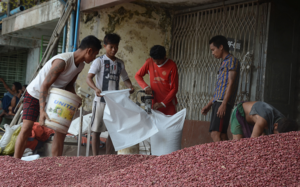 The committee set up by the government to handle the economic impact caused by the COVID-19 pandemic has issued a statement on which sectors of the economy would be prioritised for emergency low-interest rate loans that are part of a stimulus package.
The committee set up by the government to handle the economic impact caused by the COVID-19 pandemic has issued a statement on which sectors of the economy would be prioritised for emergency low-interest rate loans that are part of a stimulus package.
Cut-make-pack enterprises in the garment industry, hotels and tourism businesses, and small and medium enterprises would be given preference for the loans. In the announcement, the task force said that these sectors are priorities in the country’s economy and also the ones most immediately affected by the global economic slowdown brought on by the pandemic.
Loans with interest rates of 1 percent for businesses in the categories will be disbursed from a K100 billion fund set up by the government. The sum is further divided into a K50 billion revolving fund and K50 billion social welfare fund.
On 29 March, he Ministry of Planning, Finance and Industry (MOPFI), which is part of the task force, announced that the loans will be provided at an interest of 1 percent for a one year period. MOPFI announced that the interest and loan period will be reviewed as required depending on the impact for the country’s economy.
The government noted that failure to pay back the loans shall be met with legal proceedings in accordance with the existing laws. Applications have to be submitted between March 30 to April 9.
On 30 March, the Union of Myanmar Federation of Chambers of Commerce and Industry (UMFCCI) announced that it will cooperate with the government to respond to the impact on the country’s economy and that it helps the sectors most impacted to apply for the loans.
The government also officially announced that the 2 percent advance tax on export items will be lifted until the end of 2019-20 fiscal year.
Source: Myanmar Times





 India government has granted permission to import 400,000 tonnes of mung bean from Myanmar in the next fiscal of 2020-2021.
India government has granted permission to import 400,000 tonnes of mung bean from Myanmar in the next fiscal of 2020-2021.
 In 13 March 2020, the Central Bank of Myanmar (CBM) announced that it will reduce interest rates by 0.5 percent, effective April 1.
In 13 March 2020, the Central Bank of Myanmar (CBM) announced that it will reduce interest rates by 0.5 percent, effective April 1.